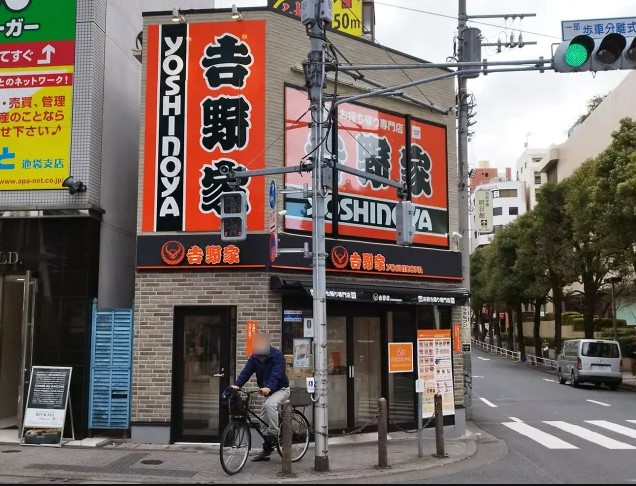
The verdict seems to be that you’re either going to roll with them…or not.
February 3, 2024 is Setsubun in Japan, a cultural festival marking the day before the start of spring in the old calendar of Japan. A special kind of uncut sushi roll is consumed on Setsubun called ehomaki (恵方巻), which symbolizes prosperity in the year to come. In recent years around this time, a proliferation of these rolls have been sold at convenience stores and supermarkets throughout the country–both traditional ones as well as more modern takes.
Even beef bowl fast food giant Yoshinoya is offering its own take on the ehomaki called “beef ehomaki.” Our Japanese-language reporter Seiji Nakazawa was curious how this version would stack up to more standard ones, so he put in a reservation at the closest Yoshinoya specializing in takeout orders, the Ikebukuro Metropolitan Street branch, to be picked up on February 2.
▼ Some Yoshinoya locations offer takeout and some don’t–and the ehomaki is a takeout-exclusive deal.
According to a staff member, there are about 10 locations of Yoshinoya in the Tokyo metropolitan area that specialize in takeout. Seiji had had no idea this was the case.
There were also two kinds of ehomaki for him to choose from. First was a plain version for 645 yen (US$4.35) and second was a pickled ginger cheese version for 699 yen. He bought one of each.
▼ Plain version on the left and ginger cheese version on the right
Seiji was running a bit later than the pick-up time he had told the staff by phone, so by the time he retrieved them and headed back to the office, there was some condensation on the bag. It was a sign of its freshness, though.
Taking them out of the bag, he was delighted to see Yoshinoya’s logo on the nori wrapping. It was a fun detail.
Digging in, he began by comparing ingredients. The plain one had a filling of beef and onions, while the other one had the same plus pickled ginger and cheese. Interestingly, the rice inside was also not vinegared sushi rice but regular steamed rice.
The plain version definitely had a greater consistency of taste. Meanwhile, the ginger cheese one had a good balance of flavor near the edge of the roll where the pickled ginger hit a wall of beef, but it was a bit inconsistent in other areas. At times it overpowered the meat altogether and tasted more like a red pickled ginger sushi roll, which was not supposed to be the goal here.
Thinking of it in another way, if a few people were to split the plain roll, they wouldn’t end up fighting over who got which piece since the quality was the same with every bite. Seiji should also mention…
…that it basically tasted like gyudon with nori in sushi roll form. That could be good or bad news depending on the person.
Consequently, while some might appreciate the familiar flavor, others might find it a little bit boring, or wonder why gyudon needs to be made into sushi roll form in the first place. Also, seven filling ingredients is supposed to be the luckiest style to mirror the Seven Lucky Gods of Japanese mythology, so there’s no denying that these ones were definitely lacking in that department.
Seiji thought this realization might even make the demons that he was supposed to be metaphorically kicking out of his life on Setsubun a little bit sad.
Like them or love them, the Yoshinoya ehomaki are part of the recent explosion of novel types of ehomaki that are here to stay. It’s too late to order any more from Yoshinoya for this Setsubun, but you can always try making some delicious and more traditional ones by yourself at home.
All images © SoraNews24
● Want to hear about SoraNews24’s latest articles as soon as they’re published? Follow us on Facebook and Twitter!
[ Read in Japanese ]

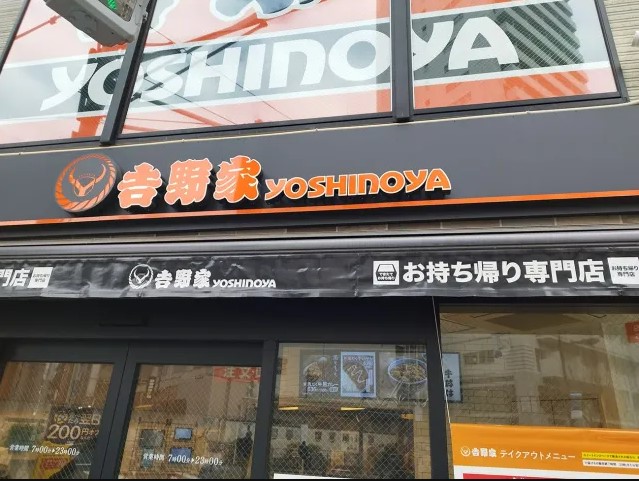
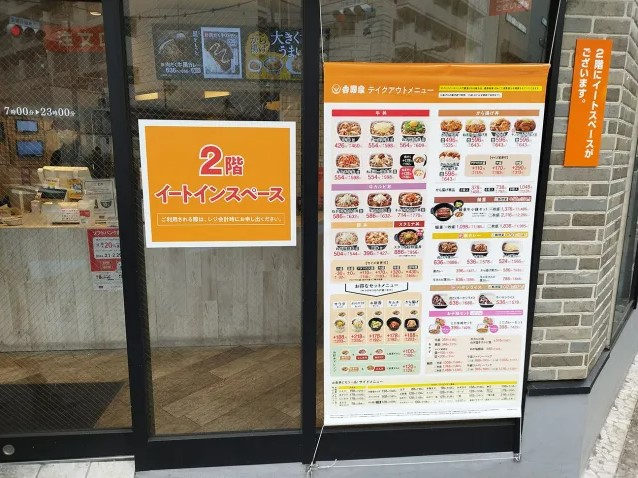
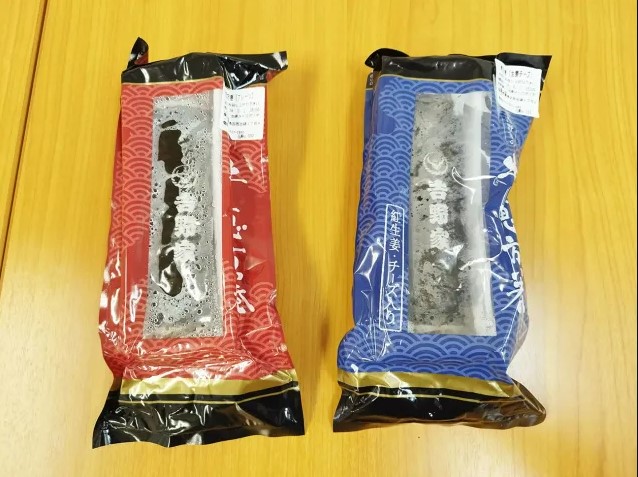
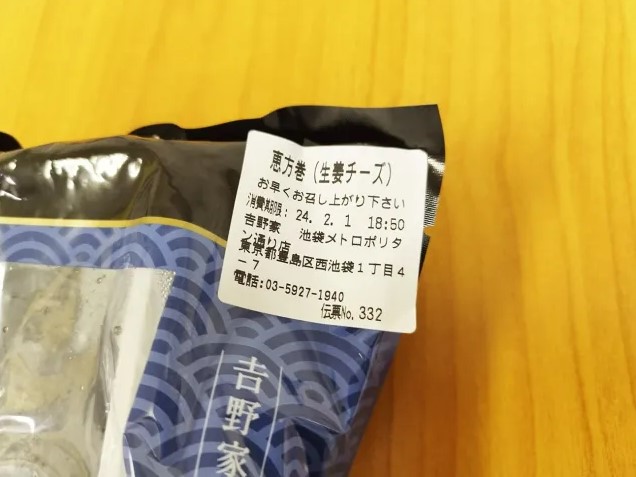
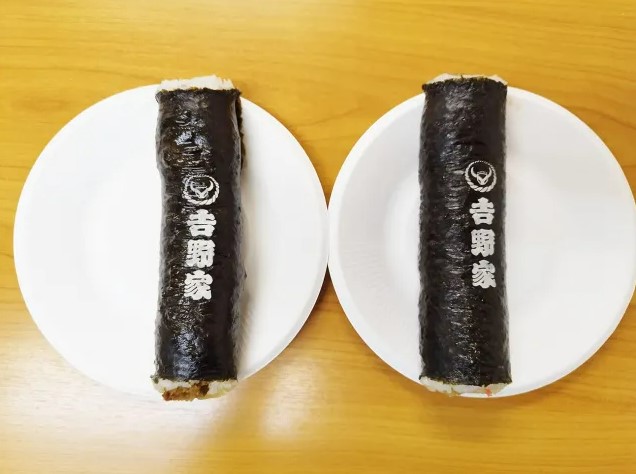
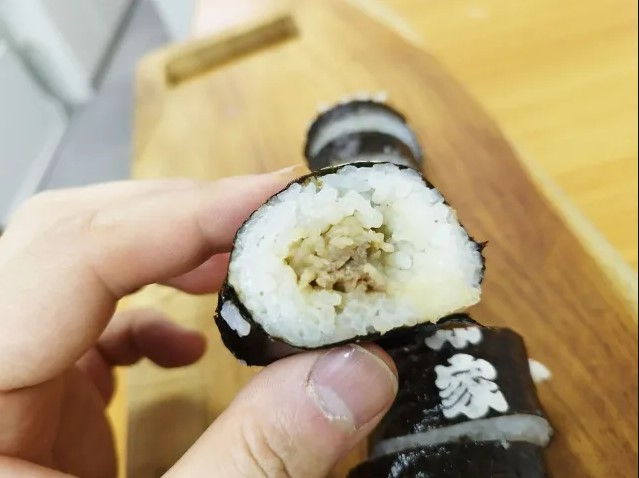
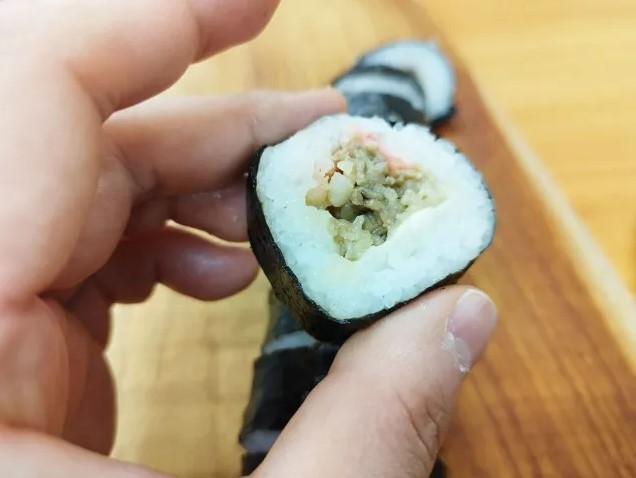
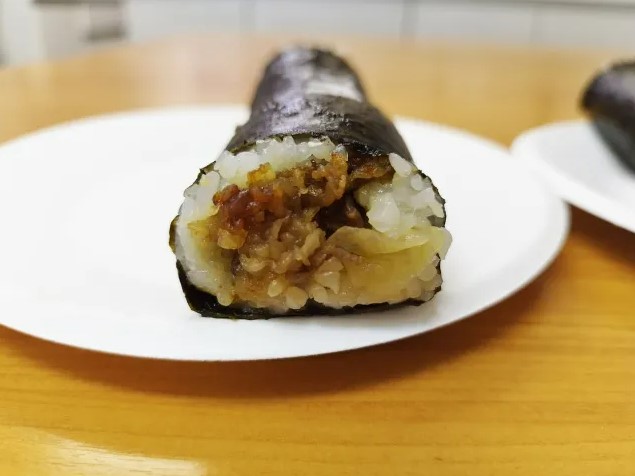
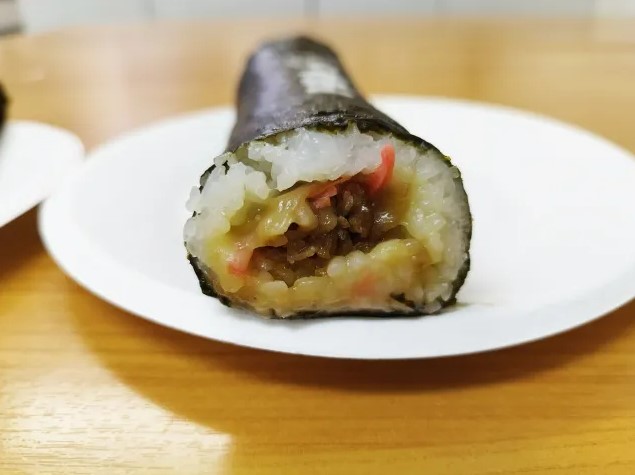
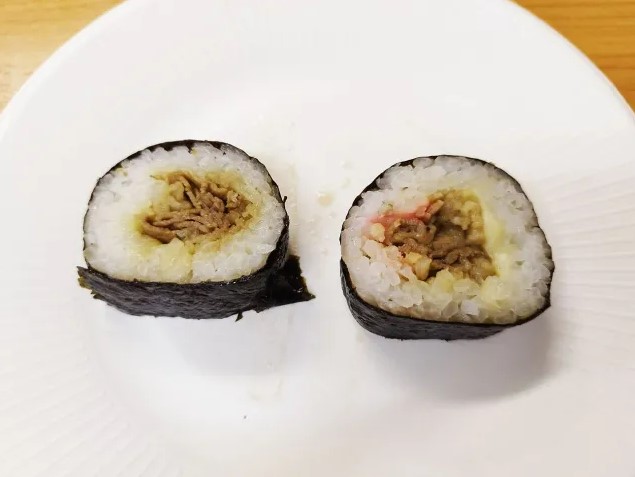
 Japanese department store wishes you a good year ahead with 150 types of delicious ehomaki
Japanese department store wishes you a good year ahead with 150 types of delicious ehomaki Cost of uneaten ehomaki sushi rolls in 2022 estimated to be over one billion yen
Cost of uneaten ehomaki sushi rolls in 2022 estimated to be over one billion yen Dean & DeLuca now has fancy good luck sushi rolls to help Japan celebrate Setsubun【Photos】
Dean & DeLuca now has fancy good luck sushi rolls to help Japan celebrate Setsubun【Photos】 Behold a 10,000-yen sushi roll covered in gold! 【Taste Test】
Behold a 10,000-yen sushi roll covered in gold! 【Taste Test】 Lucky sushi rolls coming to Kansai Aeon stores again for “Summer Setsubun”
Lucky sushi rolls coming to Kansai Aeon stores again for “Summer Setsubun” How to order snacks on a Shinkansen bullet train in Japan
How to order snacks on a Shinkansen bullet train in Japan Burger King Japan suddenly adds Dr. Pepper and Dr. Pepper floats to its menu nationwide
Burger King Japan suddenly adds Dr. Pepper and Dr. Pepper floats to its menu nationwide New Nintendo Lego kit is a beautiful piece of moving pixel art of Mario and Yoshi【Photos】
New Nintendo Lego kit is a beautiful piece of moving pixel art of Mario and Yoshi【Photos】 Hello, cosmetics! Clinique teams up with Hello Kitty this summer for first-time collaboration
Hello, cosmetics! Clinique teams up with Hello Kitty this summer for first-time collaboration Demon Slayer: Kimetsu no Yaiba gets new roller coaster attractions and food at Universal Studios Japan
Demon Slayer: Kimetsu no Yaiba gets new roller coaster attractions and food at Universal Studios Japan 11 different ways to say “father” in Japanese
11 different ways to say “father” in Japanese Kyoto tea merchant’s matcha parfait ice cream bars: The desserts we’ve been waiting 187 years for
Kyoto tea merchant’s matcha parfait ice cream bars: The desserts we’ve been waiting 187 years for East meets West in the Pacific-centered version of the world map
East meets West in the Pacific-centered version of the world map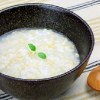 What do you eat when you catch a cold? We asked 11 of our Japanese reporters
What do you eat when you catch a cold? We asked 11 of our Japanese reporters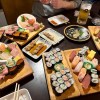 Shinjuku izakaya’s all-you-can-eat-and-drink plan is one of Tokyo’s best secret cheap eats
Shinjuku izakaya’s all-you-can-eat-and-drink plan is one of Tokyo’s best secret cheap eats Nintendo history you can feel – Super NES, N64, and GameCube controllers become capsule toys
Nintendo history you can feel – Super NES, N64, and GameCube controllers become capsule toys “The most Delicious Cup Noodle in history” – Japan’s French Cup Noodle wins our heart【Taste test】
“The most Delicious Cup Noodle in history” – Japan’s French Cup Noodle wins our heart【Taste test】 Starbucks releases a cute Frappuccino and Unicorn Cake…but not in Japan
Starbucks releases a cute Frappuccino and Unicorn Cake…but not in Japan Kyoto Tower mascot termination reveals dark side behind cute Japanese characters
Kyoto Tower mascot termination reveals dark side behind cute Japanese characters McDonald’s Japan’s Soft Twist Tower: A phantom ice cream only sold at select branches
McDonald’s Japan’s Soft Twist Tower: A phantom ice cream only sold at select branches Yabai Ramen: What makes this Japanese ramen so dangerous?
Yabai Ramen: What makes this Japanese ramen so dangerous? Finally! Nintendo Japan expands Switch 8-bit controller sales to everybody, Online member or not
Finally! Nintendo Japan expands Switch 8-bit controller sales to everybody, Online member or not Japanese government wants to build luxury resorts in all national parks for foreign tourists
Japanese government wants to build luxury resorts in all national parks for foreign tourists To combat declining birth rate, Japan to begin offering “Breeding Visas” to foreigners
To combat declining birth rate, Japan to begin offering “Breeding Visas” to foreigners 10 things you should buy at 7-Eleven in Japan
10 things you should buy at 7-Eleven in Japan Studio Ghibli releases anime heroine cosplay dresses that are super comfy to wear
Studio Ghibli releases anime heroine cosplay dresses that are super comfy to wear Woman charged for driving suitcase without a license in Osaka
Woman charged for driving suitcase without a license in Osaka Studio Ghibli unveils My Neighbour Totoro miniature house model
Studio Ghibli unveils My Neighbour Totoro miniature house model Kyoto experiencing problems with foreign tourists not paying for bus fares, but not on purpose
Kyoto experiencing problems with foreign tourists not paying for bus fares, but not on purpose Fighting mild hunger with a Japanese soda that turns into jelly in the stomach【Taste test】
Fighting mild hunger with a Japanese soda that turns into jelly in the stomach【Taste test】 Studio Ghibli’s Howl’s Moving Castle tapestry unveiled in Japan for first time
Studio Ghibli’s Howl’s Moving Castle tapestry unveiled in Japan for first time McDonald’s new Happy Meals offer up cute and practical Sanrio lifestyle goods
McDonald’s new Happy Meals offer up cute and practical Sanrio lifestyle goods Sales of Japan’s most convenient train ticket/shopping payment cards suspended indefinitely
Sales of Japan’s most convenient train ticket/shopping payment cards suspended indefinitely Sold-out Studio Ghibli desktop humidifiers are back so Totoro can help you through the dry season
Sold-out Studio Ghibli desktop humidifiers are back so Totoro can help you through the dry season Japanese government to make first change to romanization spelling rules since the 1950s
Japanese government to make first change to romanization spelling rules since the 1950s Foreigner’s request for help in Tokyo makes us sad for the state of society
Foreigner’s request for help in Tokyo makes us sad for the state of society Ghibli founders Toshio Suzuki and Hayao Miyazaki contribute to Japanese whisky Totoro label design
Ghibli founders Toshio Suzuki and Hayao Miyazaki contribute to Japanese whisky Totoro label design Doraemon found buried at sea as scene from 1993 anime becomes real life【Photos】
Doraemon found buried at sea as scene from 1993 anime becomes real life【Photos】 Tokyo’s most famous Starbucks is closed
Tokyo’s most famous Starbucks is closed Princesses, fruits, and blacksmiths: Study reveals the 30 most unusual family names in Japan
Princesses, fruits, and blacksmiths: Study reveals the 30 most unusual family names in Japan Which Japanese convenience store has the best lucky sushi roll? Unclear results show clear winner
Which Japanese convenience store has the best lucky sushi roll? Unclear results show clear winner Can you make a proper ehomaki lucky sushi roll with Daiso equipment?
Can you make a proper ehomaki lucky sushi roll with Daiso equipment? Sushiro celebrates a traditional Japanese holiday with this…sushi thing
Sushiro celebrates a traditional Japanese holiday with this…sushi thing Japan’s crazy 6,000-calorie sushi roll includes a pizza as a topping
Japan’s crazy 6,000-calorie sushi roll includes a pizza as a topping Japanese Black Wagyu from Yoshinoya – Premium beef isn’t just for politicians anymore!【Taste test】
Japanese Black Wagyu from Yoshinoya – Premium beef isn’t just for politicians anymore!【Taste test】 Yoshinoya has a semi-secret chicken bowl you won’t find anywhere on its website【Taste test】
Yoshinoya has a semi-secret chicken bowl you won’t find anywhere on its website【Taste test】 How to deal with sushi harassment in the workplace
How to deal with sushi harassment in the workplace Beautiful beefy Yoshinoya gacha capsule toys look good enough to eat or display【Photos】
Beautiful beefy Yoshinoya gacha capsule toys look good enough to eat or display【Photos】 Japan’s beef bowl king, Yoshinoya, releases new line of canned, ready-to-eat beef bowls
Japan’s beef bowl king, Yoshinoya, releases new line of canned, ready-to-eat beef bowls $89 “Phantasmal Sushi Roll” fancies up life with Matsusaka beef and truffle salt 【Taste Test】
$89 “Phantasmal Sushi Roll” fancies up life with Matsusaka beef and truffle salt 【Taste Test】 Beef bowl chain Yoshinoya’s historic first store to close, special countdown site launched!
Beef bowl chain Yoshinoya’s historic first store to close, special countdown site launched! Subway rivals a traditional Japanese sushi roll with its own traditional Japanese BLT
Subway rivals a traditional Japanese sushi roll with its own traditional Japanese BLT Yoshinoya beef bowls become miniature gacha toys
Yoshinoya beef bowls become miniature gacha toys Yoshinoya’s wagyu beef box for Japanese politicians
Yoshinoya’s wagyu beef box for Japanese politicians The greatest sushi roll in Japanese history is actually nine sushi rolls in one【Photos】
The greatest sushi roll in Japanese history is actually nine sushi rolls in one【Photos】 Yoshinoya sells frozen beef bowl topping packs, but are they as good as the restaurant kind?
Yoshinoya sells frozen beef bowl topping packs, but are they as good as the restaurant kind?
Leave a Reply